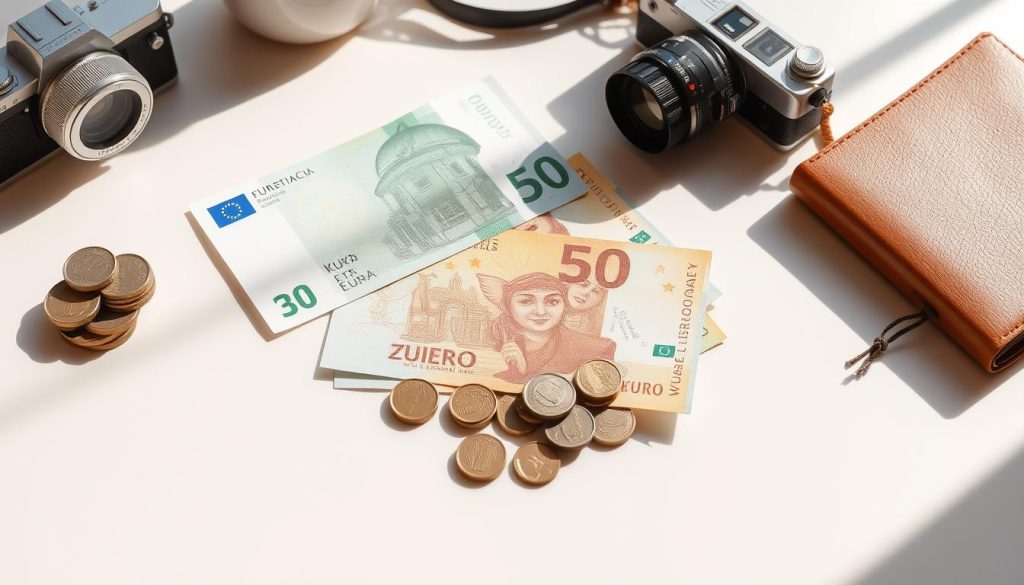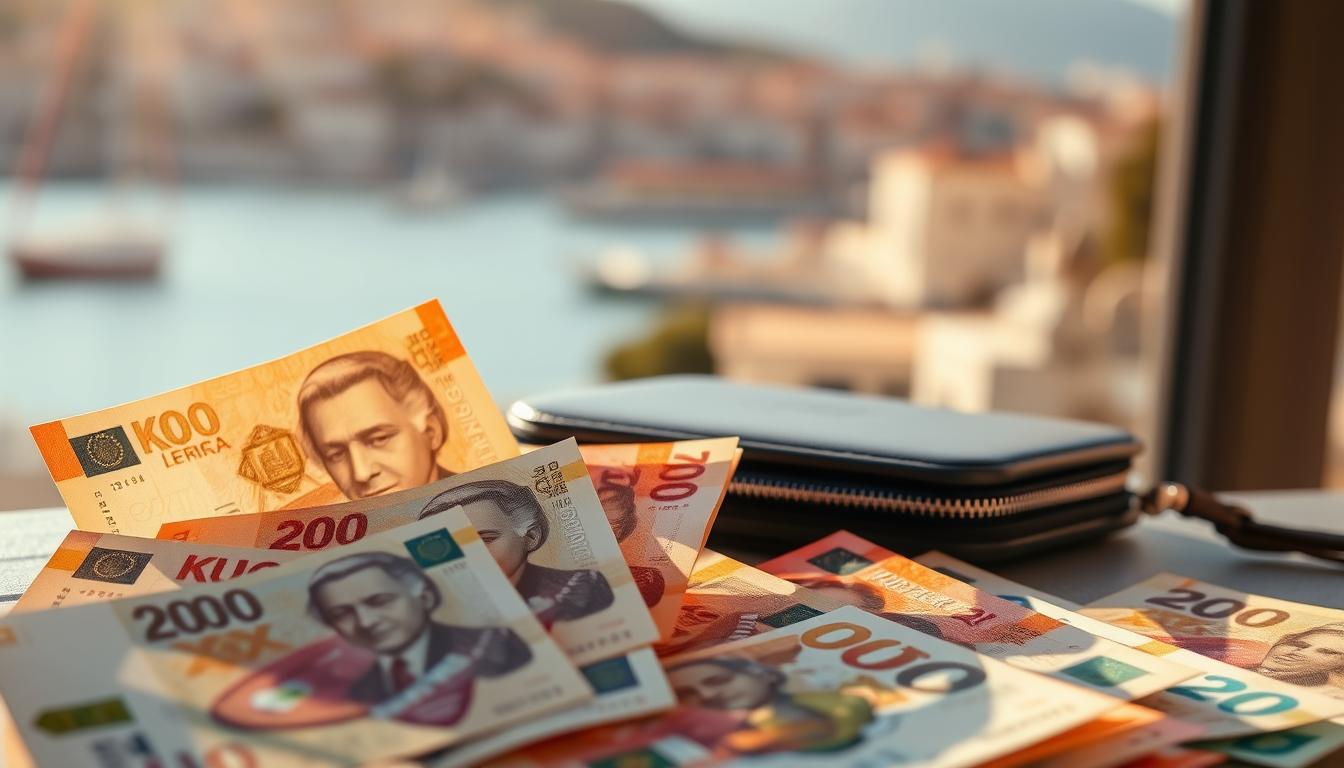✓ Accommodations✓ Flights✓ Rental Cars✓ Tours & Activities
In January 2023, this beautiful country made a significant shift—replacing the Kuna with the Euro as its official currency. This change impacts how you manage your money during your trip. Understanding this transition is key to making confident financial decisions while exploring this stunning destination.
Whether you’re planning to use cash, card, or a mix of both, this guide will help you navigate your spending with ease. From using coins for small purchases to knowing where cards are accepted, we’ve got you covered. Let’s ensure your travel experience is smooth and stress-free!
Understanding Croatia’s Currency Transition
Croatia’s adoption of the Euro in January 2023 brought a new era of financial convenience for visitors. This change not only simplifies transactions but also aligns the country with much of Europe. Understanding this transition helps you make smarter decisions about your money during your trip.

History of Croatian Currency
The Croatian Kuna, introduced in 1994, replaced the Croatian dinar at a rate of 1 Kuna for 1,000 dinar. Named after the marten, an animal whose pelts were once used as currency, the Kuna symbolized Croatia’s independence and economic stability. For nearly three decades, it served as the backbone of the nation’s financial system.
During its time, the Kuna maintained a stable exchange rate, making it a reliable choice for locals and visitors alike. However, as Croatia moved closer to European Union integration, the shift to the Euro became inevitable.
From the Kuna to the Euro
In January 2023, Croatia officially replaced the Kuna with the Euro. This transition was part of the country’s EU membership conditions, ensuring smoother financial interactions across borders. The fixed exchange rate was set at 7.53450 Kuna per Euro, making conversions straightforward.
The Euro’s adoption brought several benefits. Prices remained competitive, and transaction fees were minimized. Whether you’re using cash or a credit card, the Euro ensures a seamless experience. Many businesses now prefer card payments, especially in urban areas, making “card Croatia” a popular term among travelers.
| Currency | Years in Use | Key Features |
|---|---|---|
| Croatian Kuna (HRK) | 1994–2023 | Named after the marten, symbolized independence |
| Euro (EUR) | 2023–Present | Simplifies transactions, aligns with EU standards |
This historical shift not only reflects Croatia’s economic progress but also ensures a hassle-free experience for travelers. Whether you’re exchanging money or using your card, the Euro makes your journey smoother and more enjoyable.
Navigating Payment Options in Croatia
Managing your money while traveling just got easier with the Euro as the official currency. Whether you prefer cash or card, understanding your options ensures a smooth experience. Let’s explore the pros and cons of each method to help you make the best choice.

Pros and Cons of Using Cash
Using cash is a traditional and straightforward way to pay. It’s widely accepted, especially in smaller towns and local markets. Handling cash can also help you stick to a budget, as you can physically see how much you’re spending.
However, carrying large amounts of cash can be risky. It’s also less convenient for larger purchases or emergencies. If you prefer this method, keep smaller bills handy for everyday expenses.
Benefits of Credit and Debit Cards
Credit and debit cards are increasingly popular, especially in urban areas. They offer convenience, security, and ease of tracking your spending. Most major establishments accept cards, making them a reliable option.
Using a debit card can also save you from high currency exchange fees. Many cards are widely accepted, ensuring you’re covered in most situations. Just be aware of potential transaction fees from your bank.
| Payment Method | Pros | Cons |
|---|---|---|
| Cash | Widely accepted, easy budgeting | Risk of loss, less convenient for large purchases |
| Credit/Debit Card | Secure, easy to track spending | Potential transaction fees |
Choosing between cash and card depends on your preferences and travel plans. Both methods have their advantages, so consider using a mix for flexibility. This way, you’ll be prepared for any situation during your trip.
Currency & Payment Essentials: Croatia: Ultimate Travelers Guide to Currencies & Payments
Understanding the Euro’s denominations and practical uses can make your trip smoother and more enjoyable. The Euro is now the official currency, and knowing how to use it effectively will save you time and money.

A Detailed Overview of Currency Options
The Euro comes in both coins and banknotes, making it versatile for everyday transactions. Coins range from 1 cent to 2 Euros, while banknotes start at 5 Euros and go up to 500 Euros. Smaller denominations are ideal for cash purchases at local markets or cafes.
Banknotes are more suitable for larger expenses like hotels or tours. They’re widely accepted, but carrying smaller bills can be helpful for tipping or smaller purchases. Knowing these options ensures you’re prepared for any situation.
When using a card, you’ll find that most establishments accept major credit and debit cards. This is especially true in urban areas. However, it’s wise to carry some cash for places that might not accept cards.
“The Euro simplifies transactions, but understanding its denominations is key to managing your money effectively.”
Transaction fees can vary depending on your bank or card provider. Always check for any additional charges before making a purchase. This is especially important for tourist spots where fees might be higher.
In restaurant settings, you’ll often find that smaller bills and coins are preferred for tips. This is a great way to use your coins and ensure you’re supporting local businesses.
Understanding the exchange rate is also crucial. While the Euro is now the standard, knowing how it compares to your home currency can help you budget better. This knowledge ensures you’re getting the best value for your money.
By mastering these payment options, you’ll have a stress-free experience. Whether you’re using cash, card, or a mix of both, you’ll be ready to handle any situation with confidence.
Tips for Money Management on Your Trip
Planning your finances for a trip can be stress-free with the right strategies. Whether you’re exploring bustling cities or serene countryside, managing your money effectively ensures a smooth experience. Here’s how you can stay on top of your spending and avoid unnecessary costs.

Smart Budgeting Techniques
Start by setting a daily budget that covers meals, transportation, and activities. This helps you track your spending and avoid overspending. Use apps or a simple notebook to log expenses and stay within your limits.
When staying at a hotel, inquire about included amenities to save on extra costs. Many accommodations offer complimentary breakfast or Wi-Fi, which can reduce your daily trip expenses.
Carry a mix of cash and card for flexibility. While cards are widely accepted in urban areas, having cash ensures you’re prepared for smaller purchases or places that don’t accept cards.
Avoiding Hidden Fees
Be cautious of dynamic currency conversion (DCC) when using your card. This often results in poor exchange rates and higher fees. Always opt to pay in the local currency to get the best value.
Check with your bank about foreign transaction fees before your trip. Some travel debit cards, like Wise, offer low or no fees for international payments, saving you money in the long run.
When withdrawing cash from ATMs, look for those affiliated with major banks to avoid extra charges. Keep an eye on withdrawal limits to ensure you have enough for your daily needs.
“Smart budgeting and avoiding hidden fees are key to a stress-free financial journey.”
By following these tips, you’ll manage your money efficiently and enjoy your trip without financial worries. Whether you’re exploring a vibrant city or relaxing in a quiet town, these strategies will keep your spending on track.
ATM, Bank, and Exchange Rate Insights
Accessing your funds and understanding exchange rates are essential for a smooth travel experience. Whether you’re withdrawing cash or exchanging currency, knowing the best practices can save you time and money.
Locating ATMs in Major Cities
Finding an ATM in cities like Dubrovnik and Split is straightforward. Most are located near popular tourist spots, shopping areas, and transportation hubs. Look for ATMs affiliated with major banks to avoid high fees.
Many ATMs allow transactions in English and accept international cards. However, be cautious of dynamic currency conversion (DCC), which can lead to unfavorable exchange rates. Always opt to pay in the local currency to get the best value.
Understanding Currency Exchange Rates
Exchange rates can significantly impact how much money you spend. Banks and exchange kiosks often charge a commission, so it’s wise to compare rates before making a transaction.
Using a debit card at a bank ATM typically offers competitive rates. For example, withdrawing 100 euros might cost you $112, with no additional markup fees. This is often better than airport or hotel exchange services, which tend to have higher prices.
“Always check the exchange rate and fees before withdrawing cash or exchanging currency to ensure you’re getting the best deal.”
| Option | Pros | Cons |
|---|---|---|
| Bank ATM | Competitive rates, low fees | May have withdrawal limits |
| Exchange Kiosk | Convenient location | Higher fees, less favorable rates |
| Hotel/Airport Exchange | Easy access | Highest fees, poor rates |
By following these tips, you can manage your money efficiently and avoid unnecessary costs. Whether you’re using a card or cash, being informed ensures a stress-free experience.
Exploring Regional Variations in Payment Methods
Payment methods can vary significantly depending on whether you’re in a bustling city or a quiet rural town. Understanding these differences helps you prepare for your trip and manage your money effectively.
Urban vs Rural Payment Trends
In major cities, card payments are widely accepted. Restaurants, shops, and hotels often prefer this option for its convenience. Using a credit card or debit card can also help you track your spending more easily.
However, in rural areas, cash remains the preferred way to pay. Smaller communities may not have the infrastructure to support widespread card use. Carrying some cash ensures you’re prepared for local markets or small businesses.
- Card payments are convenient in urban areas but may come with transaction fees.
- Cash is essential in rural towns, especially for smaller purchases.
- Using a mix of both methods gives you flexibility during your travel.
When dining at a restaurant, you’ll notice differences in payment preferences. Urban eateries often accept cards, while rural spots may require cash. Knowing these trends helps you plan your spending and avoid surprises.
“Understanding regional payment habits ensures a smooth and stress-free trip.”
Finally, consider the cost of transactions in different areas. Urban centers may have higher fees for card payments, while rural areas might lack ATMs. Planning ahead saves you time and money, making your journey more enjoyable.
Understanding Payment Security and Local Customs
Ensuring secure transactions and understanding local customs can make your travel experience smoother and more enjoyable. Whether you’re using cash or a card, knowing how to protect your money and align with local practices is essential.
Safe Transaction Practices
When using a card, always keep it in sight during transactions. This minimizes the risk of unauthorized charges. Opt for credit or debit cards with fraud protection to safeguard your funds.
Carrying cash? Keep smaller amounts on hand and store the rest securely. Avoid displaying large sums in public to reduce the risk of theft. Using a money belt or hidden pouch can add an extra layer of security.
ATMs are widely accepted, but choose those located in well-lit, secure areas. Always check for skimming devices before inserting your card. Knowing your bank’s policies on foreign fees can also save you money.
Tipping Guidelines
Tipping is appreciated but not mandatory. In restaurants, rounding up the bill or leaving 10-15% is customary for good service. For smaller purchases, like coffee, leaving a few cents is a kind gesture.
In upscale establishments, a higher tip may be expected. Always check if a service charge is included in the bill to avoid double tipping. Understanding these customs ensures you show appreciation appropriately.
“Aligning your payment habits with local customs ensures a smooth and secure travel experience.”
By following these tips, you’ll navigate currency and payment practices with confidence. Whether you’re dining out or withdrawing cash, these strategies will help you stay safe and respectful of local traditions.
How to Get the Best Exchange Rates for Your Trip
Getting the best exchange rates can make your trip more budget-friendly and stress-free. By planning ahead and knowing where to exchange your currency, you can maximize your savings and avoid unnecessary fees.
Navigating Exchange Options Efficiently
Start by researching exchange rates before your trip. Online tools and apps can help you compare rates from banks, ATMs, and exchange offices. Avoid exchanging currency at airports or hotels, as they often charge higher fees.
Using a debit card abroad is a smart way to save. Many cards offer competitive rates and low transaction fees. Look for ATMs affiliated with major banks in cities or towns to minimize extra charges.
- Check your bank’s foreign transaction fees before traveling.
- Opt to pay in the local currency to avoid dynamic currency conversion (DCC).
- Carry some cash for smaller purchases or places that don’t accept cards.
“Timing your transactions can save you money. Exchange rates fluctuate, so monitor them to get the best deal.”
Minor differences in coins and bank fees can add up over time. By being informed and strategic, you’ll make the most of your euro and enjoy a smoother travel experience.
Conclusion
Exploring a new destination is exciting, but managing your finances effectively ensures a stress-free experience. With the Euro as the official currency, you’ll find it easy to navigate transactions whether you prefer cash or a card. Both options are widely accepted, offering flexibility for your trip.
To avoid unnecessary fees, opt for local currency when using a debit or credit card. Carrying some cash is also a smart option, especially in smaller towns. Understanding local customs, like tipping 10% for good service, ensures you’re respectful and prepared.
By planning ahead and choosing the right payment methods, you’ll make the most of your spending. Whether you’re in a bustling area or a quiet town, these tips will help you enjoy a smooth and enjoyable journey.
The above is subject to change.
Check back often to TRAVEL.COM for the latest travel tips and deals.






